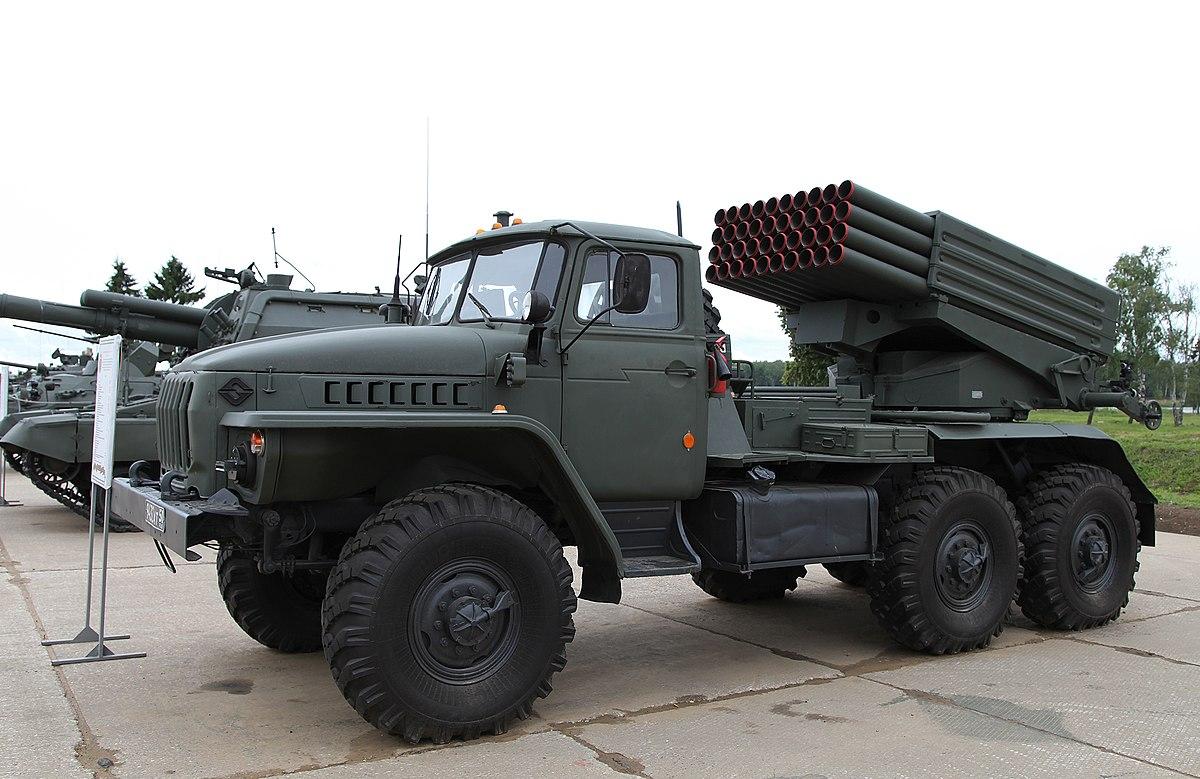Bulgarian Military: Producer of Russian Tornado MLRS is in bankruptcy
Reports from Russian industry insiders present a curious case unfolding within the realm of the General Prosecutor’s Office of the Russian Federation. At the center of it all is the bankruptcy of Motovilikhinskiye Zavody PAO, simply known as MOTZ.
If you’re not acquainted with this entity, MOTZ is held in high regard as the exclusive producer of Grad and Smerch rocket launchers, along with the Tornado-G and Tornado-C, Bulgarian Military reported on January 29.
Let’s delve a bit deeper into this case. MOTZ, a private organization, is shared equally among four people – Marat Zagidulov and Rafael Himalov as primary shareholders with Yuriy Medvedyuk and Ruslan Valitov each owning 10% of the shares.
Allegedly, since 2002, this group has been slowly pledging the plant’s assets and machinery against loans they never intended to pay back, thus driving the enterprise to the brink of bankruptcy.
Russian authorities labeled MOTZ as bankrupt as early as 2018. Nevertheless, the curious thing here is that the process of selling the company’s assets to pay off the owners’ debts hasn’t commenced so far. In 2023, they managed to sell the plant’s cultural center, albeit at a lower price.
What can be inferred from this is that even though MOTZ is financially bankrupt, the production capacities for MLRS and guided missile weaponry remain unhampered. This peculiar situation can be identified by the phrase “the enterprise is touted as financially unstable.”
In 2023, the General Prosecutor’s Office of the Russian Federation intervened in this matter due to the significance of the bankruptcy effects on this strategically important Russian defense enterprise, despite the formal private ownership.
The proposed configuration by Russian law enforcers is quite interesting – the MOTZ bankruptcy verdict will be “reversed”, and the shareholders will have to repay the state a staggering sum of 2.7 billion rubles in losses, with 1.7 billion being unspent advances from the Ministry of Defense of the Russian Federation and tax liabilities and another 1 billion rubles – accrued interest from fiscal resources.
However, there are intriguing points to note from the citations above. Despite the formal proclamation of bankruptcy for the enterprise in question back in 2018, the production of Tornado-G and Tornado-S missile systems for the Russian military didn’t hit any stops.
It could be inferred from this that the Russian defense industry exhibits resilience to both external and internal disturbances, even if production faces certain technological barriers.
According to The Military Balance 2023 guide, the Russian military had at least 160 Tornado-G systems and a minimum of 20 Tornado-C systems at their disposal at the start of the previous year.
Tornado G and Tornado-S
The Tornado-G and Tornado-S are modern multiple-launch rocket systems [MLRS] developed and utilized by the Russian military. These systems represent a significant upgrade over the older BM-21 Grad and BM-30 Smerch systems, respectively, offering improved accuracy, range, and lethality.

The Tornado-G is a 122mm system that replaces the BM-21 Grad. It is mounted on a Ural-4320 truck chassis and can carry up to 40 rockets. The Tornado-G employs GLONASS [the Russian equivalent of GPS] for navigation and targeting, which greatly enhances its accuracy. This system can fire all types of 122mm rockets, including those with cluster, thermobaric, and high-explosive fragmentation warheads.
The Tornado-S, on the other hand, is a 300mm system that replaces the BM-30 Smerch. It is mounted on an MZKT-7930 truck chassis and can carry up to 12 rockets. Like the Tornado-G, the Tornado-S also uses GLONASS for navigation and targeting, enabling it to fire rockets with various types of warheads, including cluster, thermobaric, and high-explosive fragmentation.
Operational range
When it comes to operational range, the Tornado-G can reach targets up to 20 kilometers away, while the Tornado-S touts a much more impressive range of up to 120 kilometers. This earns the Tornado-S a spot amongst the longest-range MLRS in the world.
Both systems can fire single or salvos and can engage multiple targets concurrently. The Tornado-G and Tornado-S are engineered to subdue enemy personnel, obliterate fortifications, and interrupt enemy operations from significant distances. They serve as vital elements of Russia’s artillery forces and have been utilized in various conflicts, including the ongoing conflict in Eastern Ukraine.








